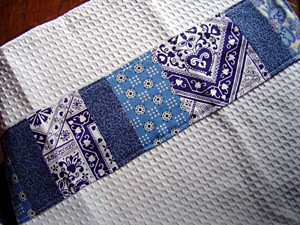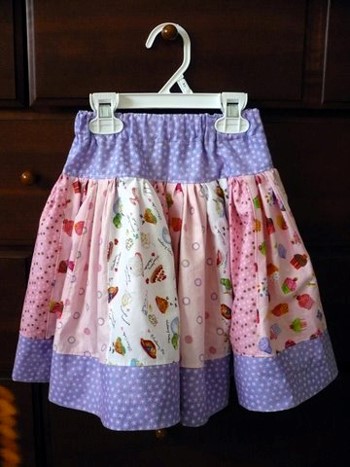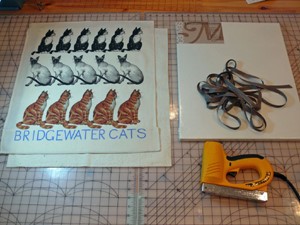Angela shares her blank Sewing Journal pages today to help you get organized and reflect on your sewing adventures. Do you have a sewing journal? Let’s see a photo!
Sewing is ridiculously fun. It’s a wonderful way to explore your creativity and to experience the simple satisfaction of making something with your own two hands.
With the massive amounts of beautiful materials and nifty tools and techniques at our disposal, it’s easier than ever to fall in love with sewing. But with so many choices, it can be hard to know how to use all of these materials and tools together in the best way. For example, it’s frustrating to not remember the perfect thread-to-needle-to-stitch length combination that worked so well in a particular project.
Save yourself from frustration. Sewing is too fun to be frustrating. That is why I made this Sewing Journal PDF worksheet.
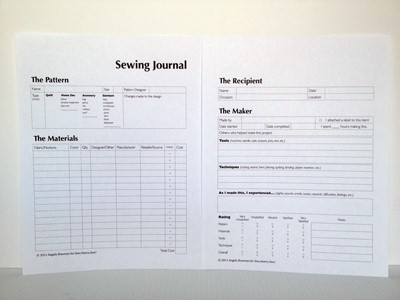
This worksheet helps you write down what you liked or didn’t like about a sewing project. You know, the stuff you’ll want to remember to save yourself from future headaches and wasted time and money.
- Did you have some absolutely perfect stitches on that last sewing project you made? Write down the fabric and thread you used, the size and type of needle in your machine, and the machine’s tension and stitch-length. Even if your stitching results are less than stellar, write down the settings you used so you can improve as you go along.
- Did you use some fabric that you absolutely adore, and now that you want more of it, you can’t remember what the name of it was or where you got it?
- Did one of your projects not come out quite right because you chose the wrong fabric type that didn’t drape nicely?
- Did you alter the pattern, and if so, how?
Write these things down!
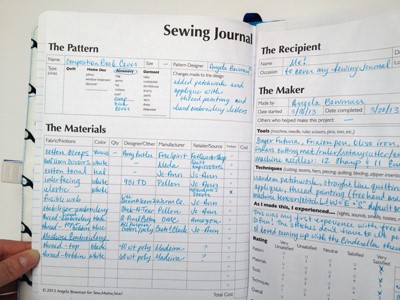
Keeping a Sewing Journal is also a great way to look back periodically and reflect on what you’ve made. This worksheet nicely captures information you might be interested in knowing at the end of the year, like…
What fabric designer is the most popular in your projects?
- Did you use any thrifted or recycled materials?
- Do you spend more time making quilts or accessories?
- What pattern did you use the most?
- What was your overall rating for the tools and techniques you used this year?
- Just how much did you spend on materials this year?
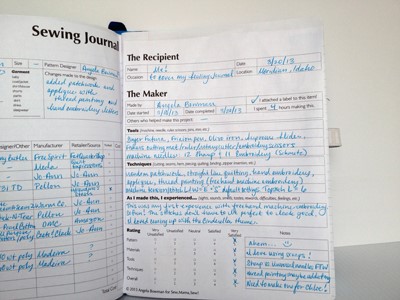
When you keep a Sewing Journal, you’re doing more than just record-keeping; you are writing a diary of your rewards, difficulties and feelings. This is the most meaningful part of keeping a Sewing Journal! Inspired by something you love to do, you are deciding to write about your life, knowing that your stories will be a gift to your family that only you can give. You may find insightful snippets of your life effortlessly appear in your writing… In a journal about sewing!
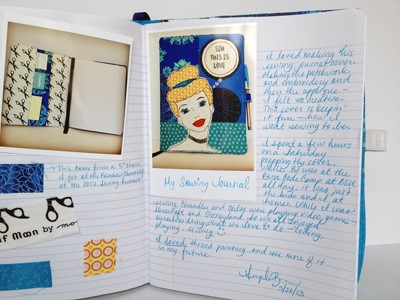
I think of how sentimental it would be to have my grandma’s sewing journal. I imagine her writing about a quilt she made: where she went shopping for the fabrics, the pattern and the tools she used, and how the toddler version of my dad was running around the house as she hand-quilted the blanket. I wonder if she had a sewing room, or if she sewed in the dining room like I do.
I wonder how much time she actually got to spend sewing, given her responsibilities of helping to run a farm while raising four rambunctious boys and one sweet girl. I wonder just how many quilts she made, and who the lucky recipients were. I imagine seeing her handwriting on the page, her perfect penmanship that she taught to my dad.
My grandma didn’t keep a journal like this but I oh so wish she did.
We have a yearning to know more about the day-to-day lives of members of our own family who have gone before us. Being denied this knowledge is tragic, especially about those who share our same creative passions.
I love having some of the sewn items my grandma made, but even better than having the handmade item itself would be to have her story.
So, there you have it, three great reasons for starting a Sewing Journal: to save yourself frustration, to reflect on what you’ve made and to give your story to your loved ones.
- To make your own Sewing Journal, you’ll need:
- Sewing Journal PDF worksheet
- Composition book or a 3-ring binder (I prefer a comp book for portability.)
- Printer and printer paper
- Scissors
- Pen
- If you’re using a 3-ring binder, you’ll need either a 3-hole punch or sheet protectors.
- If you’re using a comp book, you’ll need either glue or tape to affix the worksheets to the comp book pages (I prefer just a regular ol’ Elmer’s glue stick.)
Complete a worksheet for each sewing project you make. I wanted to design something that either a man or a woman would want to use, so no fluffy flowers anywhere. Also, the worksheets have lots of white space and no colors, for my printer’s sake. No resizing or scaling is necessary when printing the worksheets. Just print at 100% and either cut out the empty white margins for attaching to your comp book pages or 3-hole punch for your binder.
And don’t feel like you need to complete each and every part of the worksheet– Just fill out the parts you want. For example, you may not want to calculate the cost for each and every material you use in a small project, but it’s nice to have there in case you want to track costs for larger projects.
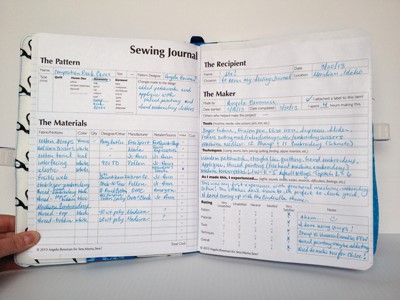
Use extra lined paper or pages to add photos, free-form writing, or swatches of fabric and trims.
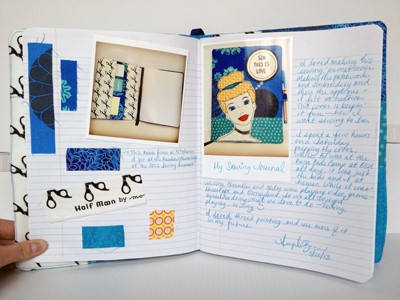
Enjoy making your own Sewing Journal! If you decide to keep your Sewing Journal in a composition book, consider sewing a cover for it!

